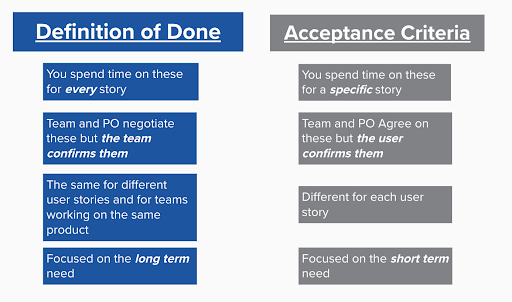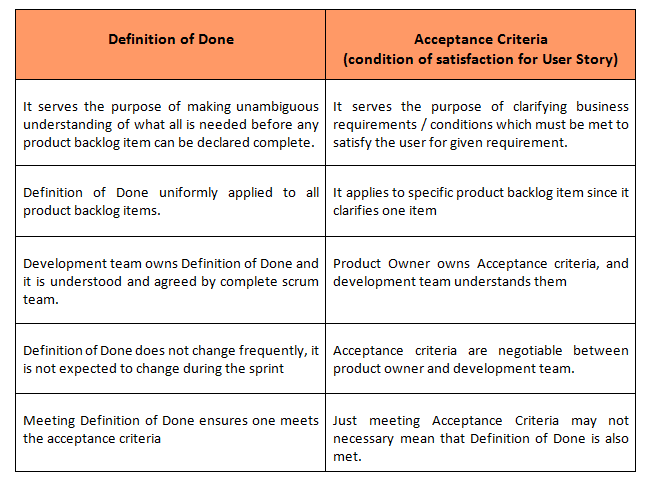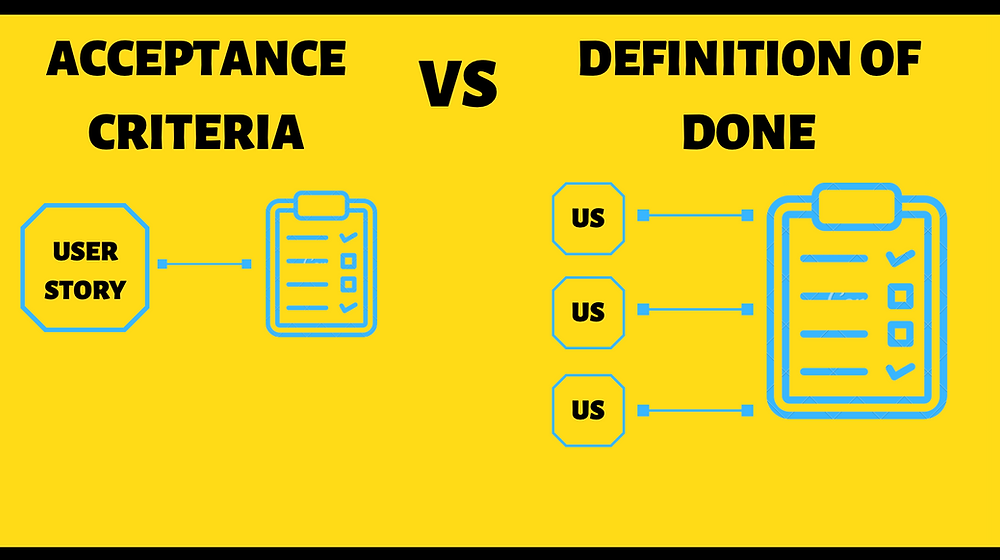Mastering the Definition of Done
Mastering The Definition Of Done
In the world of Agile development, where Scrum methodology is widely adopted, understanding and mastering the Definition of Done (DoD) and Acceptance Criteria (AC) is essential for high-performance teams. The Definition of Done encompasses the criteria that must be met for a product backlog item to be considered complete, while Acceptance Criteria are the specific conditions that must be fulfilled for a product backlog item to be accepted by the product owner.
Speak to MCTC today about our consultancy advice and training packages.
The Hypothesis-Driven Development Approach
Before diving into the intricacies of the Definition of Done and Acceptance Criteria, it’s important to explore the Hypothesis-Driven Development (HDD) approach. HDD is a mindset that encourages teams to approach software development as a series of experiments. Rather than having fixed requirements and specifications, HDD focuses on formulating hypotheses, conducting experiments, and adapting based on the results. The Definition of Done and Acceptance Criteria play a crucial role in this approach by providing clear guidelines for testing and validating hypotheses.
Understanding the Definition of Done
The Definition of Done is a critical concept in Scrum. It represents the agreed-upon criteria that a product backlog item must meet to be considered complete. It serves as a quality standard and provides a shared understanding within the team of what constitutes a fully finished and potentially shippable increment of work.
The Definition of Done varies from team to team and even from organisation to organisation. However, it typically includes aspects such as code reviews, unit testing, integration testing, user acceptance testing, documentation, and deployment. By defining and adhering to a well-defined Definition of Done, teams can ensure that they deliver high-quality work consistently.

Key Elements of the Definition of Done
The Definition of Done consists of several key elements that contribute to the successful completion of a product backlog item. These elements include quality control, compliance considerations, risk mitigation, and customer value and innovation.
Quality control is a crucial element of the Definition of Done. It ensures that the work meets the expected standards of quality, both in terms of functionality and technical aspects. This can involve conducting thorough testing, performing code reviews, and resolving any identified issues or bugs.
Compliance considerations refer to meeting any regulatory or legal requirements that are relevant to the product or project. By including compliance criteria in the Definition of Done, teams ensure that their work aligns with industry standards and regulations.
Risk mitigation involves addressing potential risks associated with the product backlog item. This can include security measures, performance optimisation, or any other considerations that reduce the risk of failure or negative impact on the product or project.
Finally, the Definition of Done should also consider customer value and innovation. It should go beyond meeting basic functionality requirements and strive to deliver features and improvements that provide value to the end-users. This can involve incorporating user feedback, implementing innovative solutions, or enhancing the user experience.
The Importance of Clear Acceptance Criteria
While the Definition of Done outlines the general criteria for completion, Acceptance Criteria provide specific conditions that must be met for a product backlog item to be accepted by the product owner. Clear and well-defined Acceptance Criteria are vital for effective collaboration and alignment between the development team and the product owner.
Acceptance Criteria act as a bridge between the product owner’s expectations and the development team’s understanding of those expectations. They serve as a common language, ensuring that everyone is on the same page regarding what needs to be delivered.

Creating Effective Acceptance Criteria
To create effective Acceptance Criteria, a collaborative approach between the development team and the product owner is crucial. The team and the product owner should work together to define the criteria based on the customer’s needs, business objectives, and the product’s vision.
Acceptance Criteria should be clear and specific, leaving no room for interpretation or ambiguity. They should be testable and measurable, meaning that there should be a way to validate whether the criteria have been met. This can involve specifying test scenarios, expected outcomes, or performance benchmarks.
Agreement within the team is another essential aspect of creating effective Acceptance Criteria. The criteria should reflect a consensus among team members, ensuring that everyone understands and agrees upon what needs to be done. Regular communication and feedback between the team and the product owner are invaluable in achieving this alignment.
Incorporating user stories into the Acceptance Criteria is also beneficial. User stories provide a narrative description of the user’s interaction with the product and can help define the specific requirements and behaviour expected from the product backlog item.
Collaboration and Communication with the Product Owner
Successful collaboration and communication between the development team and the product owner are vital in defining both the Definition of Done and the Acceptance Criteria. The product owner, being the primary stakeholder, plays a crucial role in guiding the team and providing valuable input.
Collaboration allows the team to gain a deep understanding of the product owner’s vision and expectations. By involving the product owner in the conversations and discussions surrounding the Definition of Done and Acceptance Criteria, the team can ensure that they are aligned with the product owner’s goals.
Defining Acceptance Criteria together fosters a sense of shared ownership and accountability. It provides an opportunity for the team to clarify any questions or doubts and enables the product owner to provide real-time feedback and make adjustments if necessary.
Regular communication and feedback are essential throughout the development process to address any ambiguities or misunderstandings promptly. This helps prevent rework or misalignment later in the project and ensures that the team stays focused on delivering value to the customer.

This image is property of static.wixstatic.com.
Differentiating the Definition of Done and Acceptance Criteria
It is important to understand the distinction between the Definition of Done and Acceptance Criteria, as they serve different purposes and perspectives.
The Definition of Done takes a company-wide perspective and encompasses the criteria necessary for a product backlog item to be considered complete. It includes elements related to quality control, compliance considerations, risk mitigation, and innovation. The Definition of Done provides a standardised set of expectations that apply to all product backlog items across the organisation.
On the other hand, Acceptance Criteria focus on the specific conditions that must be met for a product backlog item to be accepted by the product owner. They are more granular and detailed, providing guidelines for testing and validation.
While there may be overlapping elements between the Definition of Done and Acceptance Criteria, they serve different levels of scrutiny. The Definition of Done acts as a higher-level checkpoint, ensuring that all necessary aspects are addressed, while Acceptance Criteria provide specific guidance for evaluating individual product backlog items.
Promoting High Performance with the Definition of Done and Acceptance Criteria
The Definition of Done and Acceptance Criteria are powerful tools for promoting high performance and success in Scrum. When implemented effectively, they drive accountability, enable continuous improvement, maximise customer value, and encourage creativity and innovation.
By establishing a well-defined Definition of Done, teams set clear expectations for themselves and strive for consistent quality and excellence. This promotes a culture of accountability, as team members can take ownership of their work and ensure that it meets the agreed-upon standards.
The Definition of Done also allows teams to reflect on their processes and identify areas of improvement. By regularly evaluating the criteria and adjusting them based on feedback and lessons learned, teams can continuously enhance their performance and deliver greater value.
Maximising customer value is at the core of Scrum, and the Definition of Done and Acceptance Criteria play a crucial role in achieving this goal. By clearly defining the requirements and expectations, teams can focus on delivering features and enhancements that meet and exceed customer needs.
Finally, the Definition of Done and Acceptance Criteria should foster an environment of creativity and innovation. While they provide guidance and structure, they should not stifle the team’s ability to think outside the box and explore innovative solutions. By encouraging creativity, teams can unlock new possibilities and deliver truly exceptional results.
Common Challenges in Defining the Definition of Done
Defining the Definition of Done can be challenging for organisations, particularly when consistency needs to be maintained across multiple teams. It is not uncommon for different teams to have varying interpretations of what constitutes “done.”
To address this challenge, it is essential to invest time and effort in defining the Definition of Done properly. The entire team, in collaboration with the product owner, should be involved in the process to ensure a shared understanding and alignment.
Regular communication and feedback play a significant role in addressing any discrepancies or inconsistencies. By fostering open and transparent discussions, teams can resolve conflicts and establish a consistent Definition of Done that works for everyone.
Investing Time for Better Outcomes
While it may require time and effort to define the Definition of Done and create effective Acceptance Criteria, the investment is well worth it. Teams that dedicate the necessary resources to establish clear guidelines and expectations for their work often achieve better outcomes.
By mastering the Definition of Done and Acceptance Criteria, teams can enhance their performance, deliver high-quality work consistently, and maximise customer value. The Definition of Done and Acceptance Criteria act as effective tools for aligning the team’s efforts with the product owner’s expectations, fostering collaboration, and promoting a culture of continuous improvement.
In conclusion, the Definition of Done and Acceptance Criteria are essential components in the world of Scrum. By understanding and mastering these concepts, teams can unlock their full potential and achieve high performance in their development efforts. With clear guidelines and effective collaboration, teams can deliver exceptional results and ensure the success of their projects.
